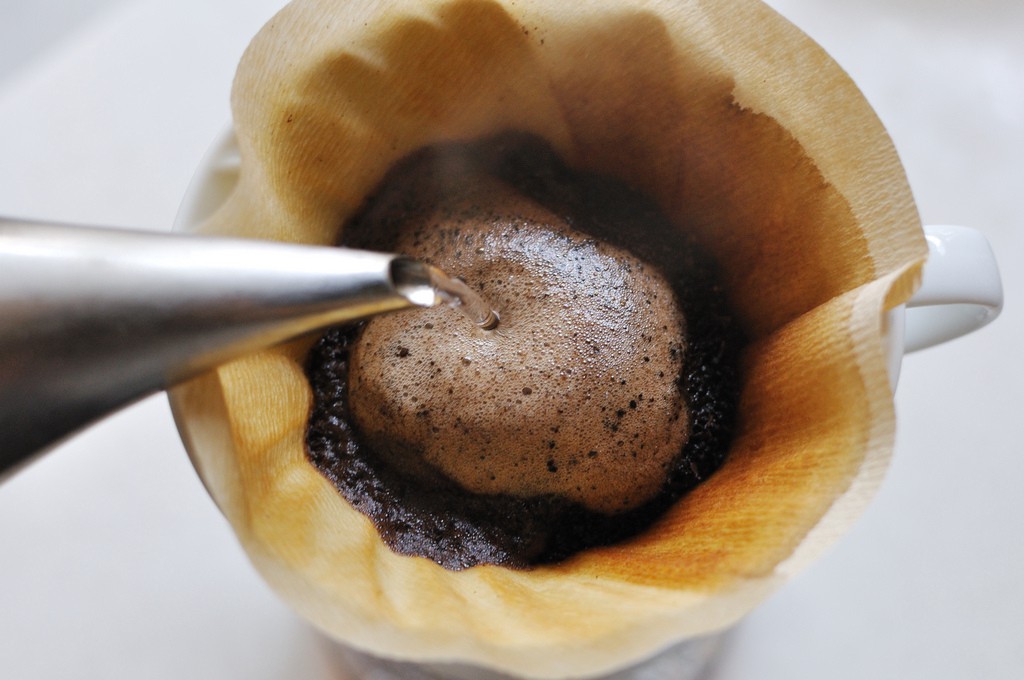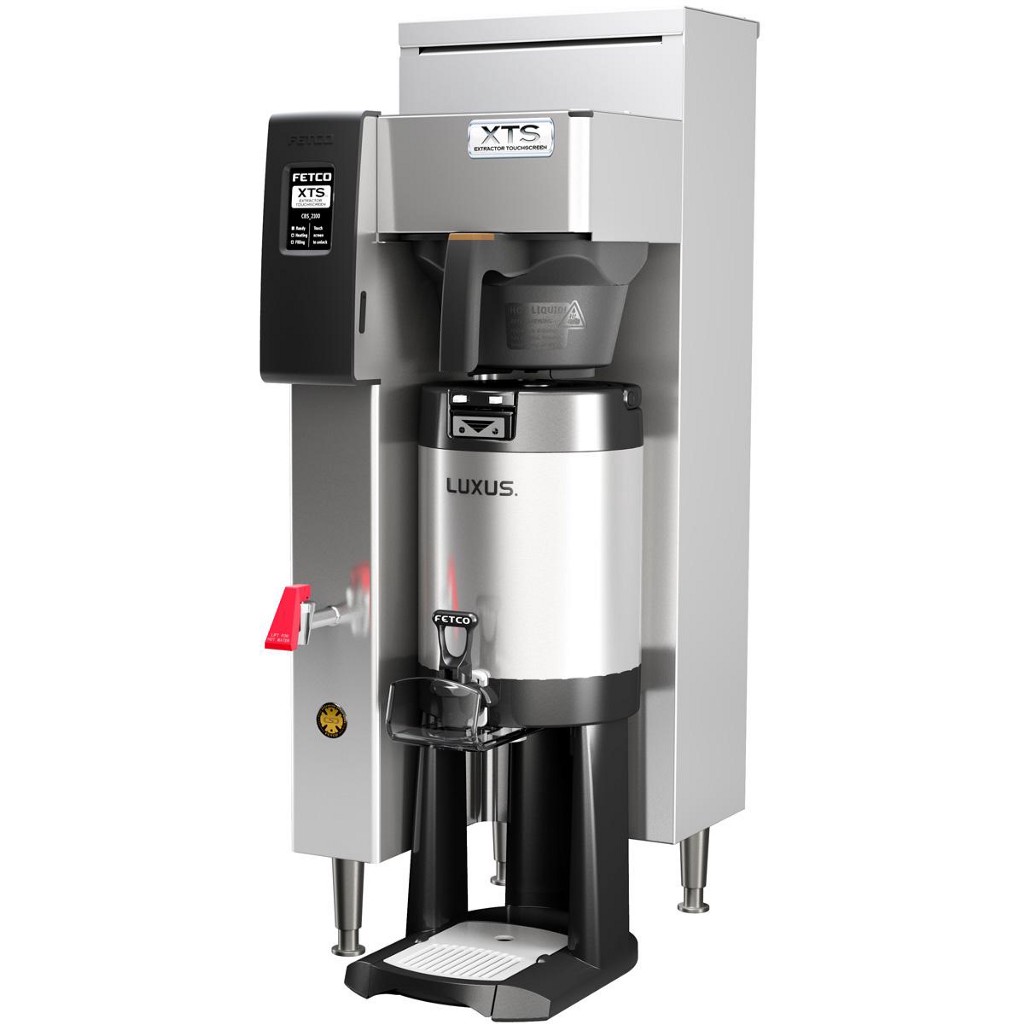The Cool Way to Brew Good Coffee

A month or so ago, at the emphatic suggestion of Foursquare, I walked into an unfamiliar coffee shop — one with tall brown bags of freshly roasted beans lined against one wall, each with a precise little sketch of the origin of its contents; a small armada of Mazzer and Mahlkonig coffee grinders; and the day’s menu scratched out in chalk above the barista’s head — and asked what was good. The barista waved off the pourover cone balanced on Hario’s official VSS-1T Acrylic Stand with Drip Tray, the Aeropress, the siphon brewer, and the espresso machine sitting on the bar. What I wanted, the barista said, was the regular coffee, fresh out of the giant automatic drip machine that everyone has seen in a million coffee shops and diners, which was guaranteed to be “unlike any other drip coffee I had ever tried.”
This exchange was a series of dog whistles between two obnoxious people: I wanted the coffee most appealing to a coffee jerk; the barista told me that this shop was aggressively Good. If you are not a beanboi, but are vaguely aware that a certain kind of highly conspicuous consumer likely enjoys “pourover” coffee which is made agonizingly slowly, one cup at a time, then you might be wondering how an automatic machine that brews like a gallon of coffee at once became a Cool Brewing Method in this age of All Things Craft. (Or not! RUN AWAY FROM THIS POST NOW, SAVE YOURSELF.)

A mildly condensed history of Cool Brewing Methods for Good Coffee might go something like this: In the beginning, which is like Seattle in the late eighties and early nineties, espresso machines were the only way to make Pretty Good Coffee, just like the Italians did, and it was Cool for a long time because who doesn’t love a good cappuccino. Then, as the coffee became truly Good in the early years of the new millennium, according to the purveyors of Good Coffee anyway, Good Coffee shops like Stumptown wanted to show off all of the Good Coffees that they personally discovered by launching expeditions to far away places. In order to do that, they wanted customers to be able to pick any coffee that they wanted to drink, any coffee at all, so they could taste the difference between a bean from Guatemala and one from Ethiopia. This meant that baristas needed to be able to brew one cup of Good Coffee at a time. So baristas did, for a little while, using French Presses and various pourover cones, and barely anyone noticed then, because there were not that many Good Coffee shops yet. And then, one day, in the mid-aughts, a startup called the Coffee Equipment Company invented a machine called the Clover that cost $11,000 and made a single cup of Good Coffee to precise specifications in less than a minute, and even better, it made the exact same cup of Good Coffee every single time at the touch of a button. A lot of Good Coffee shops, of which there were now many more, bought one and they were very happy. But a couple of years later, in 2008, Starbucks bought the Coffee Equipment Company because it wanted to be more like a Good Coffee company. This made the Good Coffee shops sad, so they all got rid of their Clovers even though they all still wanted to brew one cup of Good Coffee at a time. That is when many Good Coffee shops rediscovered “manual brewing methods,” like pourovers or siphons or Aeropresses, which became Cool Brewing Methods for Good Coffee. For a while, things were Cool and Good.
But, over time, people in the upper echelons of Good Coffee began to whisper that maybe manually brewed coffee is not all that Cool, at least not all the time: Humans, especially hastily trained ones who didn’t want to serve coffee their whole life, were way less consistent than machines (weird!), so one cup of pourover might taste pretty good, while the next tastes pretty bad; brewing coffee in a Chemex takes a long time and maybe the barista could be doing better things, like interacting with customers instead of staring glass-eyed into a pile of coffee grounds and slowly dripping water onto it like a dying flower bed; most customers — and there were so many customers these days — would be extremely happy to get their coffee in like five seconds instead of five minutes, even if it was slightly less Good; and also something something bed depth, refractometer readings blah blah, extraction yield yadda yadda. (Also, it did not help that a lot of Fake Good Coffee shops had emerged recently to take money from the growing ranks of people who now wanted Good Coffee, serving them bad coffee made with Cool Brewing Methods while saying all of the same things that Good Coffee shops tend to say, like, “meet the farmer, here is his picture, please enjoy consuming his soul with every drop.”)
Meanwhile, a number of coffee people began to wonder: What if we could replace like, at least part of the sloppy human barista with a machine so that we could brew Good Coffee more consistently but have it still look Cool? That would be very Cool. And so some coffee equipment people made hot water fountains that cost a lot of money and would automatically spray water set to very specific temperatures at ground coffee for a set amount of time. There were also ghosts of Clover past that cost thousands and thousand of dollars and made one cup of coffee at a time or maybe even two or four or whatever, and these new automatic machines promised a lot of the same things that the Clover did, like control and repeatability and precision and consistency. (“Consistency” became a word that coffee people liked to use a whole lot around this time. They still love it. They are very consistent about it, you might say.) It turned out that while Good Coffee shops thought there were some good ideas there, like customization and automation, they had no interest in buying another set of $10,000 machines to brew only a cup or two or coffee at a time, so these did not become the next Cool Brewing Method after all, even though the new coffee equipment people tried very hard to make it that way.

While all of that was happening, Good Coffee became more popular than ever, and so many people wanted it that many Good Coffee shops could not keep up with the lines, especially in the morning, no matter how many baristas they had leaning over racks of coffee, constantly pouring and pouring and pouring. This made some Very Good Coffee people think: What if we could brew a whole bunch of coffee at once? So, a little while ago, a number of Very Good Shops began brewing coffee in FETCO Extractors, which are basically exactly like the coffee machines that normal people have at home, except that they are much larger and they brew liters or gallons of coffee at a time, in large batches — hence the industry term “batch brew” — and are already in lots and lots of restaurants and coffee shops. (What made these batch brewers different is that, inspired in part by all of the things that led to those fancy $7000 water fountains, they were slightly upgraded so that it was easier for baristas to be very picky about all of the things they like to be picky about, like water temperatures and dosage and whatever, you’re already asleep.) This was also maybe a little ironic retro pique at first — sort of like fancy bars reviving shitty seventies cocktails to flick their nose a bit at the recent ubiquity of speakeasies and $12 pre-Prohibition-style cocktails — but then it was not at all. Batch brew was, in fact, some Very Good Coffee people argued, maybe the Coolest Brewing Method of all: A “properly tuned” FETCO could brew truly Good Coffee, more precisely and far more consistently than any human with any manual tools, so that if you got it right, every single cup in a batch was Good; it frees up baristas to truly interact with their customers, whatever that means; and it brews rivers of coffee so an overwhelmed barista can fully quench the morning crowd, no matter how large or how thirsty. More than that though, Good Coffee made in a batch brewer was maybe a little subversive, which is part of the point, at least in some of these Very Good shops: It shuns all of the standard and obvious visual signifiers of Good Coffee, like swan-neck kettles and Japanese ceramic cones and ceremonial arm swirling over every cup; in fact, batch brew’s largely invisible mass production makes what’s being served look a whole lot like regular old coffee. But it’s Good Coffee. (What an ideal: What if every cup of coffee was just Good, without making a big deal about it? Too late, right? lol) And so, as Very Good Coffee shops began serving batch brew, it became a Cool Brewing Method.

Anyway, so that’s what this barista was trying to tell me: This shop was using a Cool Brewing Method, implying a certain level of quality, or at least like, striving to, all by using this unremarkable coffee machine. It turned out that the coffee was extremely terrible, but that was beside the point.
Photo by yoppy
